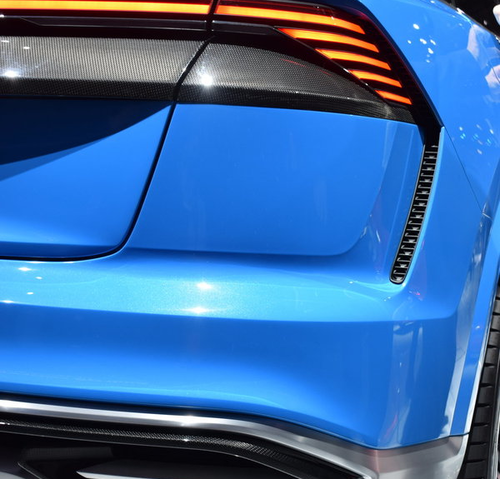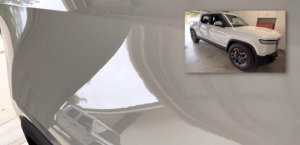By Barett Poley – January 20, 2017
Unveiled January 11th at the Detroit International Auto Show, the new Audi Q8, hybrid predecessor to the well-loved Q7 hybrid, promises to bring a host of changes to a familiar platform: Changes that may benefit the driver, and make work a little bit more difficult for collision repair technicians or bodywork specialists, including new and more widespread use of carbon-fibre in body and frame components.
While the vehicle itself boasts a higher horsepower rating, thanks to a high-output diesel V8 paired with an electric engine. According to a release by Audi, the combustion engine makes 333 horsepower, paired to a lithium ion battery producing 100kw of power – which translates to an additional 134 mechanical horsepower on top of the 333 from the combustion engine. The combined 467 horsepower from the hybrid propel it from 0-100km/h in just 5.4 seconds, and boasts a range of 1000.2 kilometers at full charge.
These features will be heavenly for a consumer who wants both power and decent mileage out of an SUV, but the cosmetic and frame features might be difficult for collision repairers or bodywork techs. The Q8 shares a platform with the Q7, the popular VW MLB Platform. That is to say, popular amongst the highest of high-end SUVs. The upcoming Q8, for example, will have the same platform as VW’s high-end luxury SUV, the Touareg. It’s also the same platform being used on the Porsche Macan, and even the same platform as the ridiculously luxurious Bentley Bentayga, which holds the title of being the world’s fastest production SUV.
 |
| The carbon fibre elements of the Audi Q8 may prove challenging for repairers. |
As a result of its shared heritage of speed and luxury, the Q8 will feature many carbon fibre accoutrements. Famously, in 2015, Audi shed nearly 700 pounds off theQ7 by replacing minor frame parts and body panels with carbon fibre; and the Q8 looks to keep up this trend, with aggressive carbon fibre rear-bumpers and grills.
The problem here for a repair technician can lie in the tricky nature of cosmetically repairing carbon fibre. The small weave of carbon fibre makes straight-up repairing it quite difficult, and its composition makes it so that in the event of a collision or crash, rather than breaking cleanly, carbon fibre breaks into many small pieces, meaning that on a structural level, most of the time it’ll have to be replaced rather than repaired. This isn’t anything new to repairers or bodywork technicians, but for consumers who might not expect the high-cost of replacement carbon-fibre, it can be potentially problematic.



























